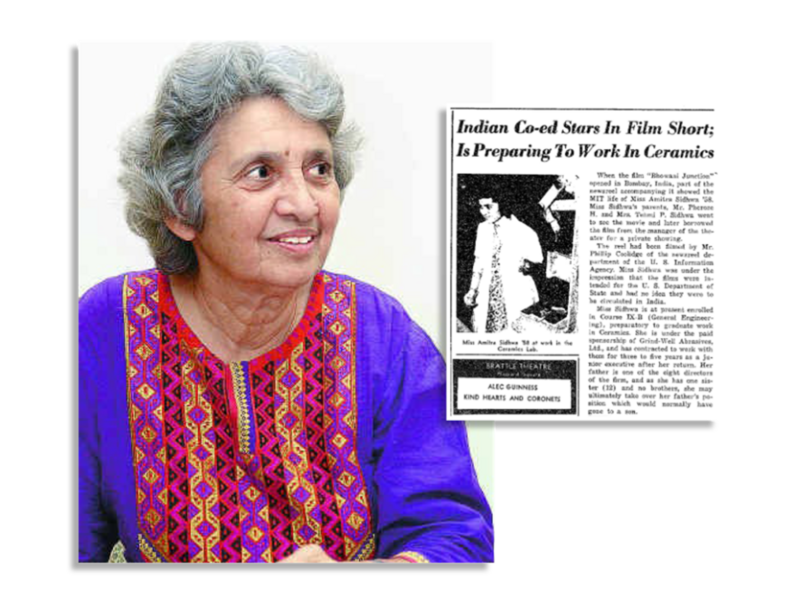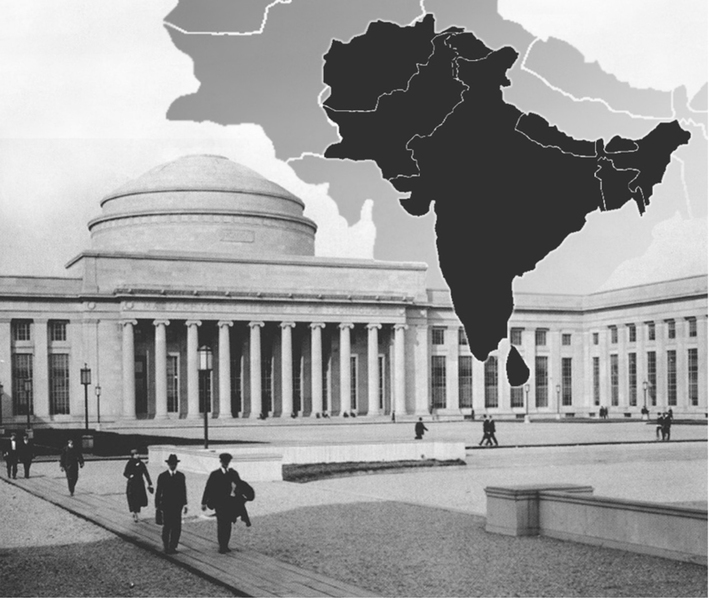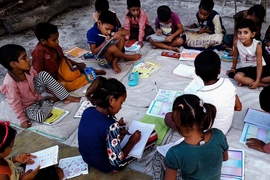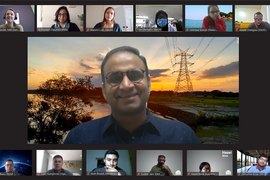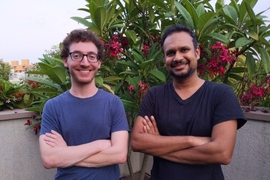When thinking about how to celebrate the approaching 60th anniversary of Sangam, the Association of Indian Students at MIT, Ranu Boppana ’87, president of the MIT South Asian Alumni Association (MITSAAA) began to reflect upon ways in which to explore the rich history of South Asians at MIT.
“As president of MITSAAA, I met several South Asian alumni who had been at MIT in the ’60s and ’70s. As an alum who was on campus in the ’80s, I could see that they were trailblazers whose presence led to the conditions and opportunities that current students take for granted, like better gender equity on campus, internships through the MIT International Science and Technology Initiatives (MISTI) MIT-India program, and cultural programs that help students feel at home away from home,” Boppana explains.
She remembered the 2017 exhibition “China Comes to Tech” at MIT's Maihaugen Gallery, which commemorated the 140th anniversary of Chinese students at the Institute. She wondered how long South Asian students and their organizations had been at MIT and soon found the work of Ross Bassett, author of “The Technological Indian.” Bassett had been researching how people from a region left behind by the industrial revolution came to be among the world’s leaders in engineering and technology.
MIT, in fact, played an outsized role in South Asia’s economic development and even in its struggle for independence from colonial rule. Boppana was stunned to learn that the first student from South Asia came to MIT in 1882, soon after the Institute’s founding. She felt that these stories of South Asian alumni needed to be told and was delighted that MIT-India could fund 11 students to do this research under the guidance of associate professor of history Sana Aiyar.
“This project tells the remarkable story of South Asia at MIT and MIT in South Asia, celebrating their far-reaching accomplishments, technical expertise, and ingenuity that have made significant contributions to the advancement of knowledge at MIT and life beyond the Institute, in South Asia, the United States, and across the world,” says Boppana.
A “history lab” is formed
Over Independent Activities Period, students were involved in conducting research, looking at historical archives on campus and beyond, and conducting oral history interviews with alumni in India and the United States. The project laid the groundwork for an online archive that traces the personal, professional, and intellectual journeys of alumni, documenting the incredible relationship between South Asia and the Institute.
MIT's first student from South Asia, Keshav Bhat, arrived at the Institute in 1882, and by the dawn of the 21st century more than 1,300 students from India alone had graduated from MIT. Today, the Institute’s South Asian alumni include hundreds of undergraduates and graduates from Pakistan, Bangladesh, Nepal, and Sri Lanka, as well as a very large number of first- and second-generation South Asians from the United States, the UK, Canada, East Africa, Mauritius, and elsewhere. Across the schools of Engineering, Science, Architecture and Planning, Humanities, Arts, and Social Sciences, and the Sloan School of Management, MIT faculty, students, and staff have been engaged at the forefront of research, technology, and innovation related to South Asia.
“I wanted to bring a historian’s gaze to this project to showcase the scope and scale of MIT’s very long and diverse engagement with South Asia,” explains Aiyar. “For six weeks, students were busy in what I like to call a ‘History Lab,’ digging up the history of the first few decades of South Asia’s MIT connections, and putting together an online archive that included oral histories of more than 30 alumni whom they interviewed.”
The students not only learned about the rich history between South Asia and MIT, but they were also able to reflect on their own personal journeys as students and connect them to the experiences of students from previous generations.
“As a present student, I think the most interesting part of this whole experience was interviewing alumni and realizing you had a lot more in common than you thought you did,” says urban studies and planning and media studies junior Husain Rizvi. “When they were talking about grappling with these issues of anti-war protests, anti-fascism — it’s just so interesting that we as students are still dealing with that today, in our own way.”
Mathematical economics senior Catherine Huang interviewed Priyamvada Natarajan, an accomplished theoretical astrophysicist who graduated from MIT with a bachelor’s degree in physics and math in 1990 and a master’s degree from MIT's Program in Science, Technology, and Society. What was intended to be an hour-long interview extended into a longer conversation around the theme of “never stop learning” as a way of keeping up with the world’s challenges.
“The reason I wanted to interview her was [because] I was interested in her perspective as a woman of color in the sciences, at a time when there were very few women in science at all.”
Through their interviews, other students found opportunities for further research. Junior linguistics and electrical engineering and computer science major Rujul Gandhi saw connections between MIT and Boston’s larger international community, noting, “MIT seemed to have a large concentration of international students, so it became the hub of where people from different campuses would come to meet.”
“MIT is an institution that is continually looking to the future, but in uncovering its history, we learn much about ourselves,” adds Boppana. “Students found that MIT probably had more South Asian ties than other universities in the U.S. at the time. The South Asian students at MIT led to MIT’s increasing connections to South Asia, which have shaped MIT into what it currently is — a global institution. I believe that knowing this history has implications for current South Asian students and how they see themselves, as they grapple with issues of belonging and identity much like generations of South Asian students before them.”
Jeffrey Ravel, professor of history at MIT, echoes the value of connecting current MIT students with prior generations. “Seeing the enthusiasm of our current students regarding the contacts made, and the lessons learned, from our alums was great,” he says. “In general, I think we need to find ways to make our classrooms and learning experiences more multi-generational.”
Connecting oral histories to a larger story
Moving forward, Aiyar, MITSAAA, and MIT-India will continue to build upon the work completed by this first cohort of students by creating an online archive that traces this incredible story and the personal, professional, and intellectual journeys of MIT’s South Asian affiliates. The project will culminate in the launch of an exhibition in conjunction with MIT Libraries to commemorate the upcoming 60th anniversary of Sangam in 2022.
Organizers hope the project will tell a larger story of how students and alumni go on to shape their communities and the role of the Institution in providing students with the experiences to accomplish this, both inside and outside the classroom.
“These histories are so rich in detail — they are deeply intimate and personal, but also allow us to tell a larger story of the South Asian presence at MIT and MIT in South Asia,” says Aiyar. “This archive, I hope, will preserve these stories for future historians and MIT students. Ultimately this is their genealogy and their history.”
